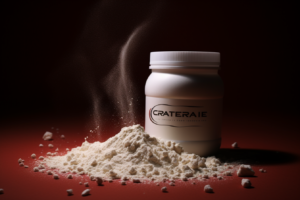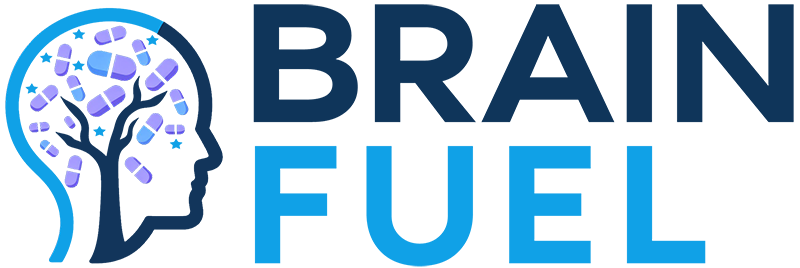What is Creatine Loading Phase?
The creatine loading phase is a popular supplementing strategy used to quickly saturate your muscles with creatine. It involves taking a higher dose of creatine, usually 20-25 grams per day, for 5-7 days. This is followed by a maintenance dose of 3-5 grams per day. The loading phase allows your muscles to quickly become saturated with creatine, allowing you to experience the benefits of creatine supplementation faster. There’s also evidence that creatine loading is necessary for you to see the full benefits of creatine supplementation. However, it’s important to note that creatine loading is not strictly necessary and there’s evidence that lower doses of creatine can still be effective. Creatine monohydrate is one of the most popular forms of creatine and is the best way to take creatine if you’re looking to maximize your muscle creatine stores. Taking creatine around your workout can also help to maximize the ergogenic effects of creatine. It’s important to note that taking high doses of creatine can lead to potential side effects such as water retention, so it’s important to be aware of this before you start supplementing with creatine. Ultimately, it’s up to you to decide if you really need a creatine loading phase or if a lower dose of creatine will be enough for you to experience the benefits of creatine supplementation.
Is Creatine Loading Necessary?
Creatine is a popular supplement used by athletes and bodybuilders to increase muscle mass and strength. But is creatine loading necessary? The answer is not so straightforward. Creatine loading involves taking a large amount of creatine (usually 20-25 grams per day) for a few days to maximize muscle creatine stores. This is followed by a maintenance dose of 3-5 grams of creatine per day. Some studies suggest that creatine loading may be beneficial for faster results, while others suggest that it is not necessary and that taking a regular dosage of 1-2 grams of creatine per day is sufficient.

The effects of creatine supplementation vary from person to person, so it is important to consider your individual needs when deciding whether or not to use creatine. If you are looking for faster results, then a creatine loading phase might be beneficial. However, if you are looking for long-term effects, then a regular dosage of 1-2 grams of creatine per day may be sufficient.
It is also important to note that creatine can cause side effects, so it is important to be aware of the potential risks before taking creatine supplements. Ultimately, it is up to you to decide if creatine loading is necessary for you.
How to Load Creatine
If you’re looking to increase your creatine levels, you may need a loading phase. This is where you take a higher dose of creatine for a few days to saturate your muscle cells with the supplement. The “creatine loading phase” involves taking 5 grams of creatine four times a day for five to seven days. After that, you can switch to a maintenance dose of 1-2 grams of creatine daily. Depending on your body weight, you may need a loading dose of 20-25 grams of creatine. This is because the intramuscular creatine stores need to be saturated for the creatine to work.
Creatine is one of the most popular supplements on the market and is also one of the most studied. Studies have shown that supplementing creatine can increase muscle strength and endurance, as well as improve the effects of oral creatine supplementation. It is also safe to use, with no known side effects of creatine. However, it is important to know that you need to stop taking creatine after the loading phase, as taking too much can lead to adverse effects. The “creatine loading phase” refers to the initial phase of taking 10-20 grams of creatine a day for five to seven days to saturate your muscle cells with the supplement. After that, you can switch to a maintenance dose of 1-2 grams of creatine each day.
Benefits of Creatine
Creatine may be one of the most popular supplements on the market, and for good reason. It has been proven to be effective in helping athletes and bodybuilders reach their goals. The “creatine loading phase” is when you take 20 grams per day for five to seven days to saturate your muscles with creatine. This helps the creatine work more effectively and quickly. Creatine is one of the few supplements that has been proven to increase stores of creatine in your muscles. After the creatine loading dose, you can take 1-2 grams of creatine per day to maintain your levels of creatine within your muscles.
Creatine is also a safe supplement to take. Studies have shown that taking up to 25 grams of creatine per day is safe and effective. Even taking as little as 10 grams of creatine per day can increase the efficacy of creatine. So, if you’re starting a creatine regimen, you need to know that it is a safe and effective supplement to take. It can help increase the levels of creatine in your muscles, and it is typically well tolerated by most people.
Effects of Creatine
Creatine is a safe and effective supplement that has been used by athletes and bodybuilders for decades. It is typically taken in the form of a powder or pill and is known to increase creatine levels in your muscles. During the creatine loading phase, you take 20 grams of creatine per day for 5-7 days to quickly increase your creatine levels. After the loading phase of creatine, you can take 1 gram of creatine per day to maintain your creatine levels.

Creatine is also known to increase muscle strength and size, improve exercise performance, and reduce fatigue. It is important to know that creatine is safe when taken in the recommended doses.
However, if you take too much creatine, it can cause side effects such as stomach cramps, nausea, and diarrhea.
So, if you are considering taking creatine, make sure to talk to your doctor first to ensure that it is safe for you.
Conclusion
Creatine loading is a process that helps to increase the amount of creatine within your muscles. It is typically done by taking a large dose of creatine for a few days, followed by a maintenance dose. Creatine is also naturally produced by the body, but it can be supplemented to increase the amount of creatine within the muscles. There are a few things you need to know about creatine loading. First, it is important to take the correct dosage and to follow the instructions provided by the manufacturer. Second, it is important to drink plenty of water while taking creatine, as it can cause dehydration. Finally, it is important to take a break from creatine loading after a few weeks, as it can cause side effects such as stomach upset and muscle cramps. In conclusion, creatine loading is a great way to increase the amount of creatine within your muscles, but it is important to follow the instructions provided and to take a break after a few weeks.

FAQ’s:
Q1. What is a creatine loading phase?
A1. A creatine loading phase is a period of time in which you take a higher dose of creatine to help saturate your muscles with creatine within a shorter period of time.
Q2. What do you need to know about creatine?
A2. You need to know that creatine is a naturally occurring compound found in the body and is also found in certain foods. It is typically used as a supplement to help increase muscle mass and strength.
Q3. How does creatine work within your muscles?
A3. Creatine works within your muscles by helping to increase the production of ATP, which is the energy source for muscle contractions.
Q4. How long does the creatine loading phase last?
A4. The creatine loading phase typically lasts for 5-7 days, during which you take a higher dose of creatine than you would normally take.
Q5. What are the benefits of a creatine loading phase?
A5. The benefits of a creatine loading phase include increased muscle mass and strength, improved performance, and faster recovery times.
Q6. How much creatine should you take during the loading phase?
A6. During the loading phase, you should take 20-25 grams of creatine per day, divided into four to five doses.
Q7. What are the side effects of creatine?
A7. The side effects of creatine include stomach upset, nausea, and diarrhea. It is important to drink plenty of water when taking creatine to help reduce the risk of side effects.



 Types Of Creatine Supplements
Types Of Creatine Supplements
